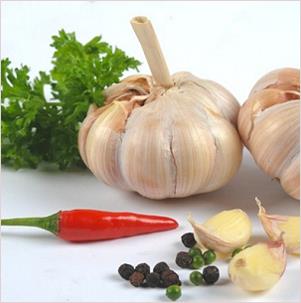NATURAL REMEDIES

Health Tips
Natural Remedy for Treating Sprains
Treating a sprained ankle is easy withnatural remedies. Here are four ways of doing that:
RICE
Rest: Rest your sprain. Hobbling around will put pressure on your ankle and make it worse.
Ice: It has a soothing effect on pain. Application of an ice pack will help bring down the swelling and provide you relief from the pain. Apply an ice pack for around 10 to 20 minutes and repeat every couple of hours.
Compression: Using a compression wrap in the first 2-3 days will reduce the swelling and provide relief. Wrap an elastic bandage around the injury. Make sure it is not too tight but allows the blood to circulate.
Elevate: Keep your ankle elevated above your heart level to lessen the swelling. Do it for 2-3 hours daily, particularly at night.
EPSOM SALT
Epsom salt, or magnesium sulfate crystals, has a soothing effect on sprains. Dissolve one cup of Epsom salt in a tub of warm water. Keep the sprained ankle soaked in it for around half an hour. Repeat once. Do it daily twice for the next 3 to 4 days.
TURMERIC
Turmeric has anti-inflammatory properties and therefore considered a good natural remedy for pain. It reduces pain, brings down inflammation, swelling and stiffness.
For a sprain, take two tablespoons of turmeric powder, one tablespoon of lime juice and make a paste with a little warm water. Apply the paste on the sprain, wrap a thin strip of cotton cloth around it and leave it on for at least 10-12 hours. Repeat after 12 hours and continue for a week.
TURMERIC & ARTHRITIS
Turmeric has been used for generations in Chinese and Indian Ayurvedic medicine to treat arthritis. It has traditionally been known to help reduce inflammation of the joints and stiffness providing relief from pain to those suffering particularly from rheumatoid arthritis and osteoarthritis. Turmeric (curcuma longa, cur¬cuma domestica) contains the chemical curcumin which is key in preventing inflammation of the joints.
Studies have found that curcumin has anti-inflammatory qualities and modifies the immune system responses. It blocks inflammatory cytokines and enzymes, including cyclooxygenase-2 (COX-2), the target of celecoxib (Celebrex).
Benefits of garlic | What is garlic good for?

Garlic known for its strong and flavorful aroma is not only a favorite cooking ingredient but also known to have several health benefits. In fact, its medicinal properties have been known for thousands of years. It was used by major civilizations of the world including the Egyptians, Babylonians, Greeks, Romans and the Chinese for its healing effects.
Garlic has a lot of beneficial qualities. It is antibiotic, antimicrobial and has antioxidants. Contains a great amount of nutrients like Vitamin B6, Vitamin C, manganese, selenium and fiber at the same time is low in calories. This herb can be used both internally and externally.
These health benefits of garlic are said to be because of the sulfur-containing compounds which are released when garlic is crushed or chopped. Chief ingredient of garlic is allicin which is also responsible for the strong pungent ‘garlicky’ odor.
Apart from allicin, the other sulfur compounds released includes diallyl disulfide and diallyl trisulfide. These are also said to contribute to a person’s general wellbeing. They are said to display strong health benefits when ingested or applied superficially.
Here are some well-known benefits of garlic:
Fights Fatigue | Why am i so tired?
Easy solution to the most asked question “why am I always tired?”. Researches have shown that garlic helps reduce fatigue and other signs of stress. It improves stamina and energy levels. The usage of garlic dates back to the ancient Egyptian when the laborers who built the Pyramids were given garlic to eat. The purpose behind this was to increase their immunity, improve energy levels and reduce fatigue.
Garlic for bones
Garlic may have a positive effect on women’s bone health by reducing bone loss. Though there is no definite study to substantiate this, initial research notes that a daily dose of garlic can bring down a marker of estrogen

deficiency in menopausal women.

Treating Arthritis Naturally

Arthritis is a disease that affects the joints connecting the bones causing inflammation and making movement painful. It may affect anyone – men, women or children – and can last a lifetime in varying degrees unless diagnosed early.
Keeping arthritis and the associated pain and discomfort under control is possible if you eat the right kind of food and maintain a healthy lifestyle. Certain foods have been identified as being good for arthritis. Topping this list is food rich in Omega-3 fatty acids.
Omega-3 fatty acids are polyunsaturated fatty acids and known to have considerable health benefits because of their anti-inflammatory properties. Arthritis sufferers can find relief from pain and stiffness if they include foods rich in Omega-3 fatty acids into their daily diet.
Fish is an important source of this and experts recommend you should have fish at least a couple of times a week. Fatty fish like tuna, salmon, mackerel and trout are rich in Omega-3 fatty acids. Other food items also considered good for arthritis relief include broccoli, Brussels sprouts, cabbage, kale and cauliflower.
Four Drinks to Enhance Physical Fitness and Rehabilitation
Coconut Water

- High Levels of potassium and magnesium
- Lesser sodium than other sports drinks
- Contains great amounts of anti-oxidants and minerals
Chocolate Milk

- Superlative water content for rehydration
- Essential electrolytes the body needs
- Good amounts of carbs to cover up for the lost glycogen
Black or Green Tea

- Reduces the soreness of muscles
- Helps enhance muscle strength
- Effectively acts in fat oxidation
Tart or Berry Juice

- Filled with anti-inflammatory properties
- Prevents the loss of strength and reduces fatigue
- Decreases damage to the muscles and tendons







